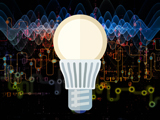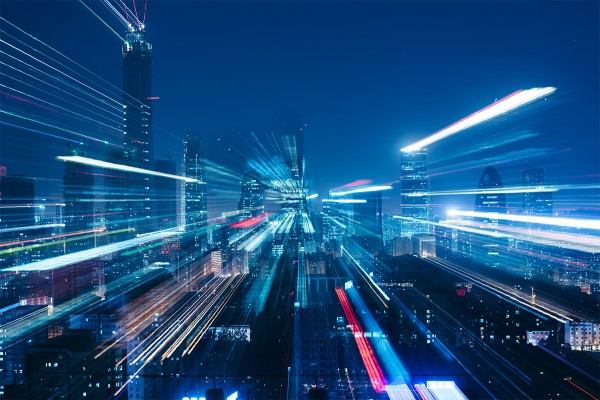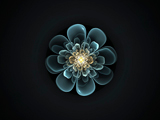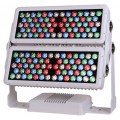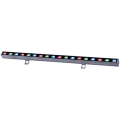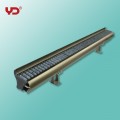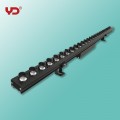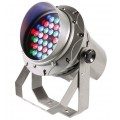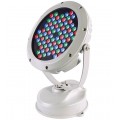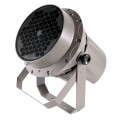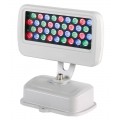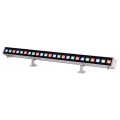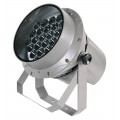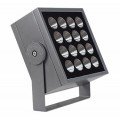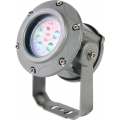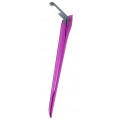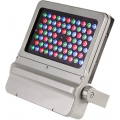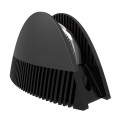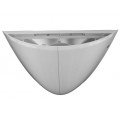Light fixtures are, of course, used for a plethora of purposes. Apart from simply providing illumination to allow people to see better, fixtures are also oftentimes employed for architectural purposes, for instance to highlight features to provide an intended aesthetic appearance. Architectural lighting includes facade lighting, coloring, outlining, spot-lighting, silhouetting, or any applicable combination of these types of techniques. For example, in some structures it is desirable to deliver a large visual hot spot or high point of illumination to attract interest to that area. Accent lighting is used for such purposes. Highlighting building facades can enhance dimensionality and context to a nighttime scene but can simultaneously result in visual distractions visible from a great distance. Wallwashing and grazing are lighting techniques that are used in a multitude of different spaces to attain various design goals. Effective wall grazing fixtures will distribute light along side height of the wall, with uniformity of illumination desired amongst the lowest and highest vertical areas of the wall, which uniformity is hard to delineate and challenging to achieve.
No matter what the intent behind the lighting, effective lighting will ideally have the light reliably and efficiently delivered to provide the desired lighting. Digital lighting technologies, particularly light-emitting diodes (LEDs), offer a practicable alternative to traditional fluorescent, HID, metal halide, and incandescent lamps. LEDs have a number of other appealing features. They are fully dimmable without color variation. LEDs are instant on, instant off light source. They are capable of starting cold and low voltage DC operation. LEDs can be binned for photometric luminous, flux, color, wavelength, radio metric power, and forward voltage. Furthermore, LEDs produce directional light as opposed to conventional light sources that emit light omnidirectionally, which then causes a loss of intensity. Typical losses vary from 40% to 60% of the light generated. The direct nature of LEDs can contribute to efficiencies of 80% to 90%. This translates to reduced maintenance costs by doing away with or practically trimming the frequency of required maintenance. These characteristics provide many favorable aspects for LED lighting systems over the conventional architectural lighting systems.
LEDs can be designated to emit at any desired wavelength, for example in the red, green, blue, ultraviolet, or infrared spectral regions. LED color compatibility with fluorescent and incandescent sources also means they are advantageous in environments with mixed light sources. In an array of LEDs, LEDs are able to each emit in the same spectral region, or can radiate in different spectral regions. Different LEDs may be employed to generate different colors where the color of light produced from the light emitting element is selectable. Some RGB LED luminaires feature adjustable color temperature (e.g., 3000K- 6500K), making it possible for their "tuning" for color matching or decorative effects. Multi-color linear LED lights uniformly illuminate a sizable portion of a wall, precisely target a full spectrum of saturated color and superior quality white light, rendering high-quality intelligent color and white light from the same fixture, granting an unparalleled level of design freedom. In particular, luminaires employing high-flux LEDs are fast proving itself to be a superior alternative to conventional light fixtures owing to their higher overall luminous efficacy and ability to generate an assortment of lighting patterns and effects.
With appropriately designed electronic control systems, LED lights can be controlled for color balance and intensity while maintaining color fidelity. This is not typically attainable with traditional light sources. Light control systems can introduce dynamic brightness and color effects which could offer subtle enhancements or gaudy distractions, in accordance with the range, speed and duration of the changes and the preferences of the reviewer. Individual control of the different LEDs benefits in the ability to control the color of the emitted light. Use of quickly changing, dynamic text, images or patterns, particularly with direct view sources, needs careful attention to avoid creating distraction hazards for vehicle operators and/or generating obtrusive light to the surrounding community.












